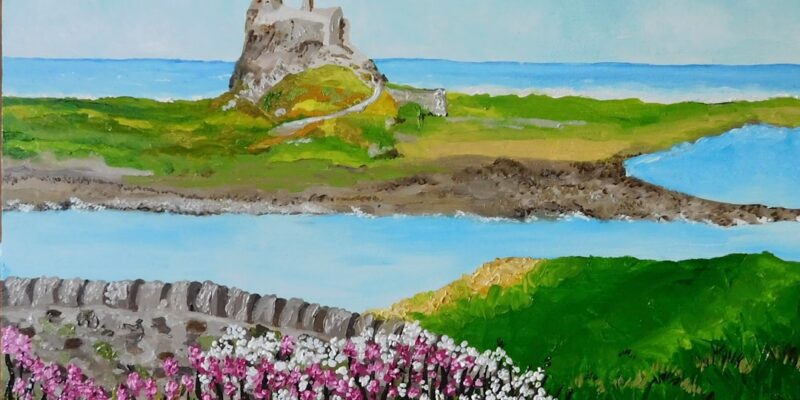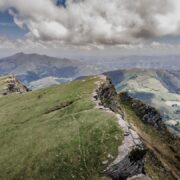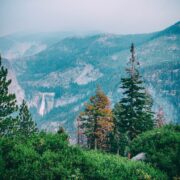
Journeying the Camino: A Trek of Self-Discovery
The Camino de Santiago, also known as the Way of St. James, is a popular pilgrimage route in Spain that attracts thousands of people from all over the world each year. This ancient trail has a rich historical and cultural significance, and offers a unique experience for those who choose to embark on the journey. In this blog post, we will explore what the Camino is all about, why people choose to walk it, and provide insights and tips for those who are considering taking on this incredible adventure.
Key Takeaways
- The Camino is a pilgrimage route in Spain that attracts people from all over the world seeking spiritual and personal growth.
- Physical and mental preparation is important before embarking on the Camino, including training for long walks and practicing mindfulness.
- There are several routes to choose from, each with its own unique scenery and challenges.
- Accommodations on the Camino range from basic albergues to more luxurious hotels and hostels.
- Meeting fellow pilgrims and experiencing the camaraderie and support on the trail is a highlight of the Camino journey.
What is the Camino and Why Do People Journey It?
The Camino de Santiago is a network of pilgrimage routes that lead to the shrine of the apostle St. James the Great in the Cathedral of Santiago de Compostela in Galicia, Spain. The most popular route is the Camino Francés, which starts in the French town of Saint-Jean-Pied-de-Port and spans approximately 800 kilometers. Other routes include the Camino Portugués, Camino del Norte, and Camino Primitivo, among others.
The Camino has a long history dating back to the Middle Ages when it was one of the most important Christian pilgrimages. Today, people walk the Camino for a variety of reasons. Some do it for religious or spiritual purposes, seeking a deeper connection with their faith or a sense of personal renewal. Others are drawn to the physical challenge and adventure of walking long distances through beautiful landscapes. Many also see it as an opportunity for self-discovery and personal growth.
Preparing for the Camino: Physical and Mental Training
Preparing for the Camino requires both physical and mental training. Walking long distances day after day can be physically demanding, so it’s important to build up your endurance and strength before setting off on the journey. Start by incorporating regular walks into your daily routine, gradually increasing the distance and intensity over time. It’s also a good idea to do some strength training exercises to prepare your muscles for the long hours of walking.
Mental preparation is equally important. Walking the Camino can be a challenging and sometimes grueling experience, so it’s important to have the right mindset. Be prepared for long days of walking, unpredictable weather conditions, and physical discomfort. Remind yourself of your reasons for embarking on this journey and stay focused on your goals. It can also be helpful to practice mindfulness and meditation to cultivate a sense of inner peace and resilience.
In addition to physical and mental training, having the right gear and equipment is crucial for a successful Camino experience. Invest in a good pair of walking shoes or boots that are comfortable and provide adequate support. Pack lightweight clothing that is suitable for different weather conditions, as well as a rain jacket and a hat. Don’t forget essentials such as a backpack, water bottle, sunscreen, and a first aid kit.
The Different Routes of the Camino: Which One Should You Choose?
| Route Name | Total Distance (km) | Estimated Time (weeks) | Difficulty Level |
|---|---|---|---|
| Camino Francés | 780 | 4-5 | Moderate |
| Camino Portugués | 610 | 3-4 | Easy to Moderate |
| Camino del Norte | 825 | 5-6 | Difficult |
| Camino Primitivo | 320 | 2-3 | Difficult |
| Camino Inglés | 120 | 1-2 | Easy to Moderate |
There are several different routes of the Camino, each offering its own unique experience. The most popular route is the Camino Francés, which starts in Saint-Jean-Pied-de-Port in France and takes approximately 30-35 days to complete. This route is known for its beautiful landscapes, charming villages, and vibrant pilgrim community.
Other popular routes include the Camino Portugués, which starts in Lisbon or Porto in Portugal, and the Camino del Norte, which follows the northern coast of Spain. These routes offer stunning coastal scenery and a quieter, more peaceful experience compared to the Camino Francés.
When choosing a route, there are several factors to consider. Think about your fitness level and how much time you have available for the journey. Some routes are more challenging than others, so it’s important to choose one that suits your abilities. Consider whether you prefer a more social or solitary experience, as some routes are busier and more crowded than others. It can also be helpful to read about other people’s experiences and recommendations to get a sense of what each route has to offer.
The Camino Experience: A Day in the Life of a Pilgrim
A typical day on the Camino starts early in the morning, as pilgrims aim to cover a certain distance before the heat of the day. After waking up and getting ready, pilgrims usually start walking around sunrise. The first few hours are often quiet and peaceful, as the world slowly wakes up and the sun begins to rise.
Throughout the day, pilgrims walk at their own pace, taking breaks whenever they need to rest or refuel. Along the way, there are small towns and villages where pilgrims can stop for a meal or to restock on supplies. These pit stops also provide an opportunity to interact with locals and fellow pilgrims, sharing stories and experiences.
As the day progresses, pilgrims continue walking until they reach their destination for the night. This could be a small village with an albergue (pilgrim hostel), a hotel, or a private accommodation. After checking in and settling down, many pilgrims take time to relax and reflect on their day’s journey. Some choose to attend a pilgrim mass at the local church, while others simply enjoy a quiet evening in the company of fellow travelers.
Accommodations on the Camino: Albergues, Hotels, and Hostels
Accommodations on the Camino vary depending on personal preferences and budget. The most common type of accommodation is the albergue, which is a pilgrim hostel that offers basic facilities such as bunk beds, communal bathrooms, and shared kitchen areas. Albergues are usually run by volunteers and operate on a donation basis, making them an affordable option for budget-conscious pilgrims.
Hotels and private accommodations are also available along the Camino, offering more comfort and privacy. These options tend to be more expensive, but provide amenities such as private rooms, en-suite bathrooms, and sometimes even swimming pools or spa facilities. Some pilgrims choose to mix and match their accommodations, staying in albergues on some nights and treating themselves to a hotel stay on others.
When booking accommodations on the Camino, it’s important to plan ahead, especially during peak pilgrimage seasons. Albergues can fill up quickly, so it’s a good idea to make reservations in advance, especially if you have specific preferences or requirements. Many albergues also operate on a first-come, first-served basis, so it’s advisable to arrive early in the day to secure a bed.
Meeting Fellow Pilgrims: The Camaraderie and Support on the Trail
One of the most special aspects of walking the Camino is the sense of camaraderie and support among fellow pilgrims. The shared experience of embarking on this journey creates a unique bond that transcends language, culture, and background. Along the trail, pilgrims often form deep connections with one another, offering encouragement, support, and friendship.
There are many ways to meet and connect with other pilgrims on the Camino. Some people prefer to walk alone and enjoy the solitude of the journey, while others actively seek out social interactions. Pilgrims often gather at communal areas in albergues or stop for breaks at cafes and restaurants along the way. These are great opportunities to strike up conversations and get to know other travelers.
Pilgrim meals are another popular way to connect with fellow pilgrims. Many albergues offer communal dinners where everyone contributes a dish or a donation. These meals provide a chance to share stories, experiences, and laughter with people from all walks of life. It’s also common for pilgrims to exchange contact information and stay in touch even after the Camino is over, forming lasting friendships that span the globe.
The Spiritual and Cultural Significance of the Camino
The Camino de Santiago has deep religious and spiritual significance for many pilgrims. The journey is often seen as a way to seek spiritual enlightenment, find answers to life’s questions, or deepen one’s faith. Along the trail, there are numerous churches, chapels, and religious sites where pilgrims can pause for reflection, prayer, or attend mass.
In addition to its religious significance, the Camino is also a cultural experience like no other. Walking through small villages and historic towns, pilgrims have the opportunity to immerse themselves in the local culture, traditions, and cuisine. Each region along the Camino has its own unique charm and character, offering a glimpse into the rich history and heritage of Spain.
For many pilgrims, the Camino is a transformative experience that goes beyond the physical journey. It is a chance to disconnect from the distractions of everyday life and reconnect with oneself on a deeper level. The simplicity of walking, the beauty of nature, and the encounters with fellow pilgrims all contribute to a sense of inner peace and clarity.
Overcoming Challenges on the Camino: Physical and Emotional Obstacles
Walking the Camino is not without its challenges. The physical demands of walking long distances day after day can take a toll on the body. Blisters, muscle soreness, and fatigue are common ailments that pilgrims face along the way. It’s important to listen to your body and take breaks when needed. Proper foot care, stretching exercises, and staying hydrated can also help prevent injuries and discomfort.
Emotionally, the Camino can be a rollercoaster ride. There will be days when you feel strong and motivated, and others when you question why you embarked on this journey in the first place. It’s normal to experience a range of emotions, from joy and excitement to frustration and doubt. Remember that it’s all part of the process and that challenges are opportunities for growth and self-discovery.
One of the most important strategies for overcoming challenges on the Camino is to stay positive and maintain a sense of humor. Laugh at yourself when things don’t go as planned, embrace the unexpected, and be open to new experiences. Lean on your fellow pilgrims for support and encouragement, and remember that you are not alone on this journey.
Lessons Learned on the Camino: Self-Discovery and Personal Growth
Walking the Camino is a transformative experience that often leads to self-discovery and personal growth. The physical challenges, the solitude, and the encounters with fellow pilgrims all contribute to a deeper understanding of oneself and the world around us.
One of the most important lessons learned on the Camino is the power of simplicity. As pilgrims carry everything they need on their backs, they quickly realize how little they actually need to be happy and content. Material possessions become less important, and the focus shifts to the present moment and the beauty of simple pleasures.
The Camino also teaches us about resilience and perseverance. Walking long distances day after day requires discipline, determination, and a strong mindset. It’s a reminder that we are capable of more than we think, and that we can overcome obstacles with patience and perseverance.
Finally, the Camino teaches us about the importance of connection and community. The bonds formed with fellow pilgrims are often deep and meaningful, reminding us of our shared humanity and the power of human connection. The Camino shows us that we are all on our own individual journeys, but that we can support and uplift one another along the way.
Walking the Camino de Santiago is a life-changing experience that offers a unique blend of physical challenge, spiritual reflection, and cultural immersion. Whether you are seeking a deeper connection with your faith, a sense of personal renewal, or simply an adventure of a lifetime, the Camino has something to offer everyone.
As you prepare for this incredible journey, remember to train both your body and mind, choose a route that suits your abilities and preferences, and pack the right gear and equipment. Embrace the challenges and the unexpected, stay open to new experiences, and be kind to yourself and others along the way.
The Camino de Santiago is not just a physical journey, but a journey of the soul. It is an opportunity to discover who you truly are, to connect with something greater than yourself, and to find meaning and purpose in the simplest of things. So lace up your boots, take that first step, and let the Camino guide you on a path of self-discovery and personal growth.
FAQs
What is the Camino de Santiago?
The Camino de Santiago is a network of pilgrimage routes that lead to the shrine of the apostle Saint James the Great in the Cathedral of Santiago de Compostela in Galicia, Spain.
How long is the Camino de Santiago?
The length of the Camino de Santiago varies depending on the route taken, but the most popular route, the Camino Francés, is approximately 780 kilometers (485 miles) long.
How long does it take to walk the Camino de Santiago?
The time it takes to walk the Camino de Santiago depends on the individual and the route taken, but the Camino Francés typically takes between 4-6 weeks to complete.
What is the best time of year to walk the Camino de Santiago?
The best time of year to walk the Camino de Santiago is typically between April and October, with the months of May, June, and September being the most popular.
What should I pack for the Camino de Santiago?
It is recommended to pack light for the Camino de Santiago, with essentials such as comfortable walking shoes, a backpack, clothing suitable for the weather, a sleeping bag, and toiletries.
Do I need to be physically fit to walk the Camino de Santiago?
While it is recommended to be in good physical condition, the Camino de Santiago can be walked by people of all ages and fitness levels. It is important to listen to your body and take breaks as needed.
Where do I stay while walking the Camino de Santiago?
There are a variety of accommodations available along the Camino de Santiago, including hostels, hotels, and private rooms. Many pilgrims also choose to stay in albergues, which are low-cost dormitory-style accommodations specifically for pilgrims.
What is the history of the Camino de Santiago?
The Camino de Santiago has been a pilgrimage route for over a thousand years, with the first recorded pilgrimage taking place in the 9th century. It has since become one of the most popular pilgrimage routes in the world.



















Hello there! Do you know if they make any plugins to assist with Search Engine Optimization?
I’m trying to get my site to rank for some targeted keywords but I’m not seeing very good
gains. If you know of any please share. Thanks! You can read
similar article here: Blankets
As a way to have an built-in design, however, the Board introduced in externally produced maps.